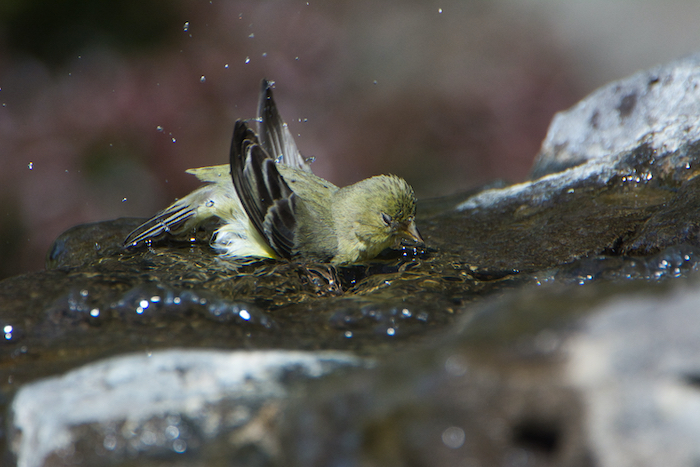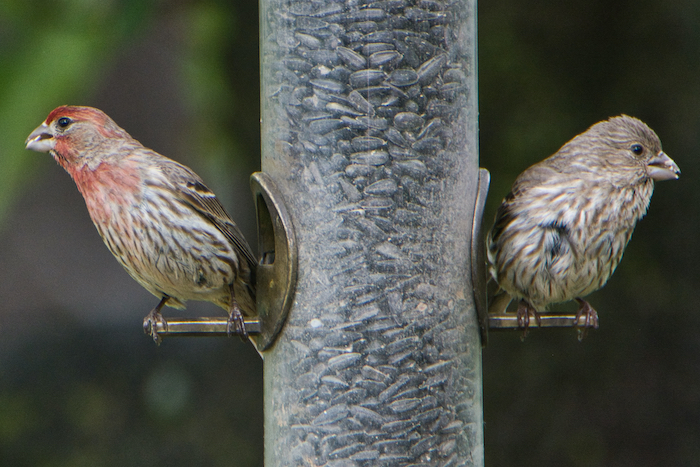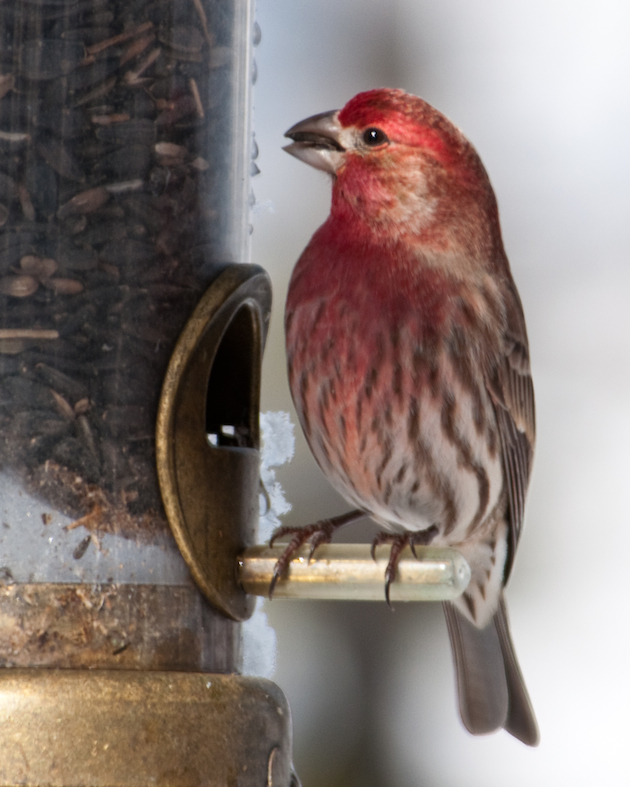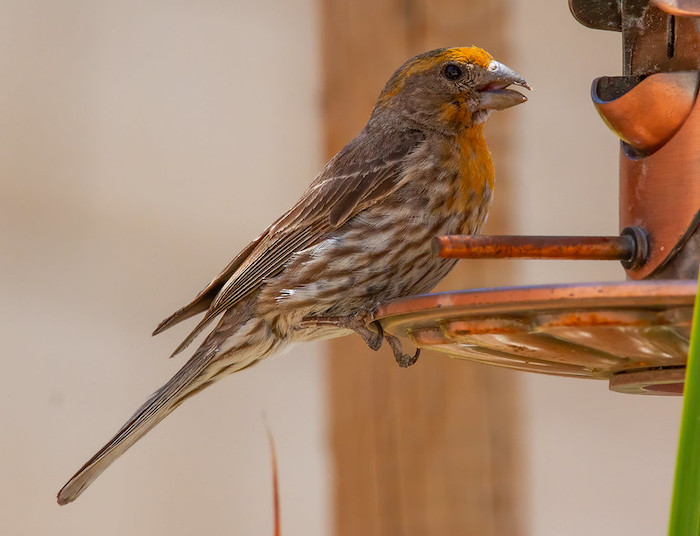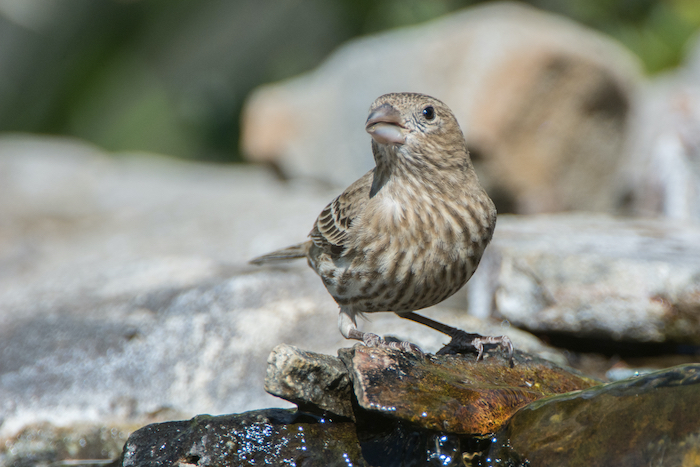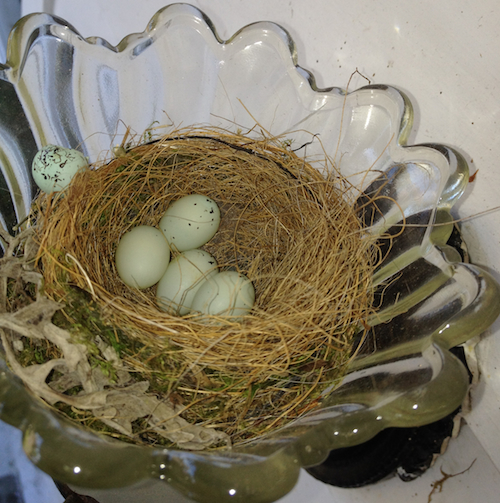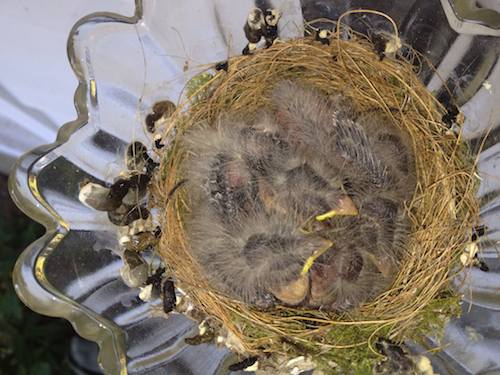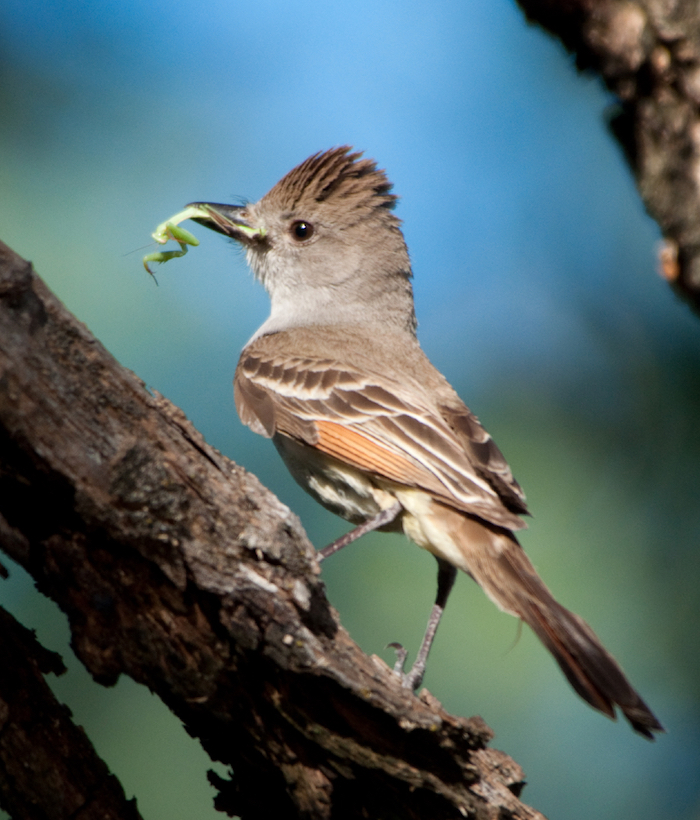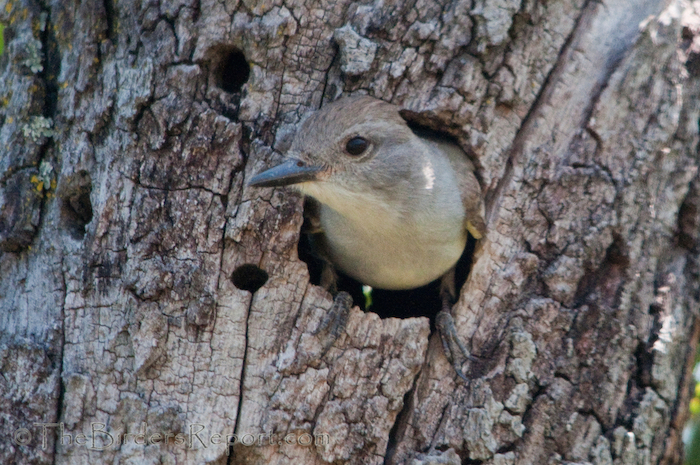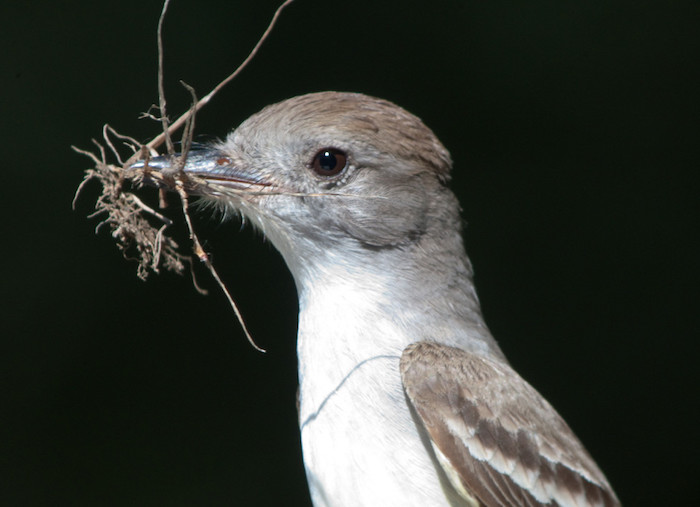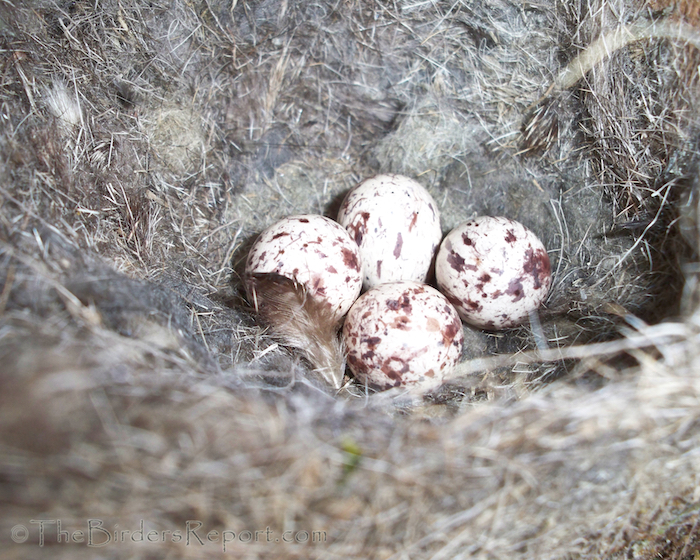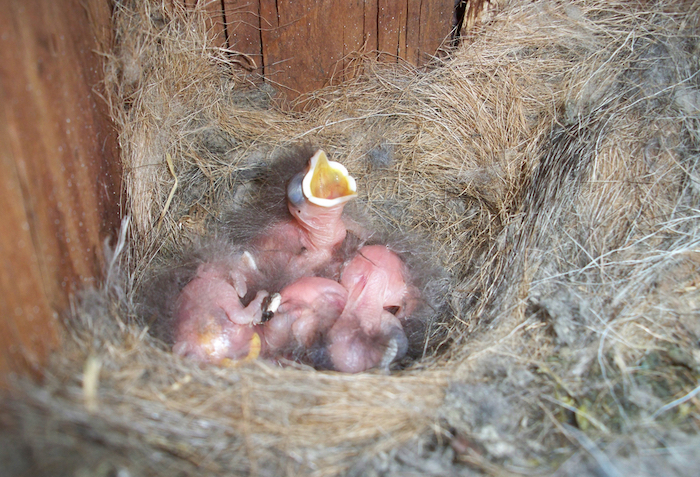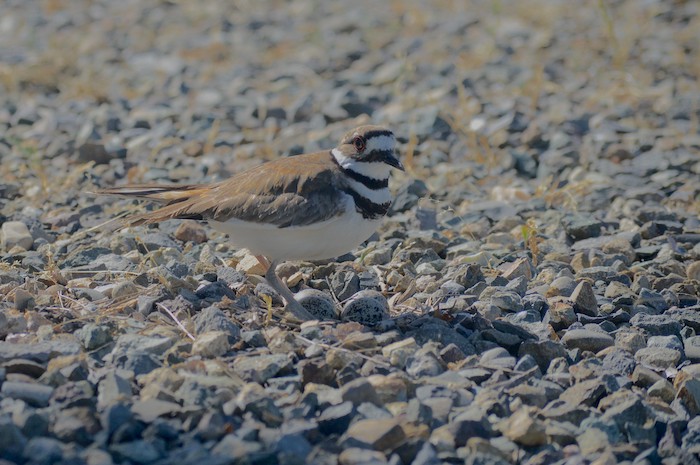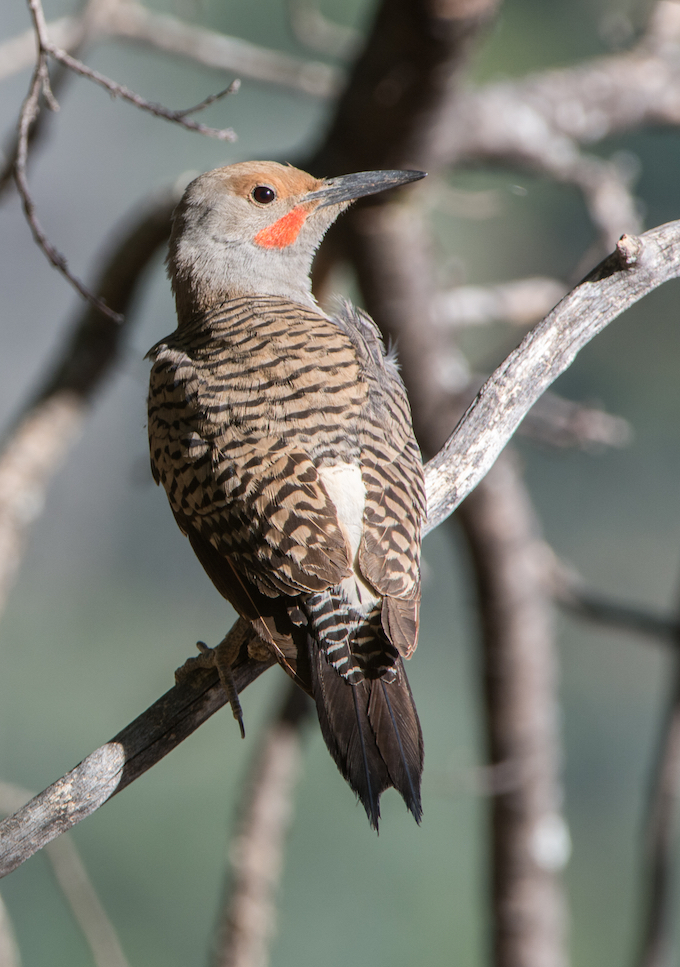
Northern Flicker Male
It’s election season, and not too big a stretch to see red, white, and blue in some of our feathered aboriginals. Many colorful birds have headed to Mexico for the winter, but northern flickers, after spending summer in cooler areas upslope, along the river, or northward, have returned to our local woodlands.
Flickers are woodpeckers, and our western version has bright red under its wings, a bold white rump patch, and, for a willing eye in good light, a steely blue-gray face, offset in the male with a red dash of a whisker.
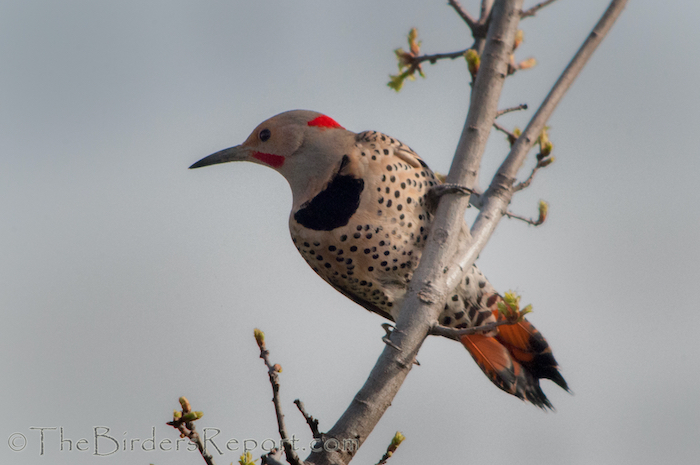
Northern Flicker Male Intergrade
The eastern version of the flicker shuffles some of these colors around, and substantially substitutes yellow for our western red. But yellow or red, both flickers sport a beautiful black necklace, speckled breast and belly, and a list of beneficial behaviors.
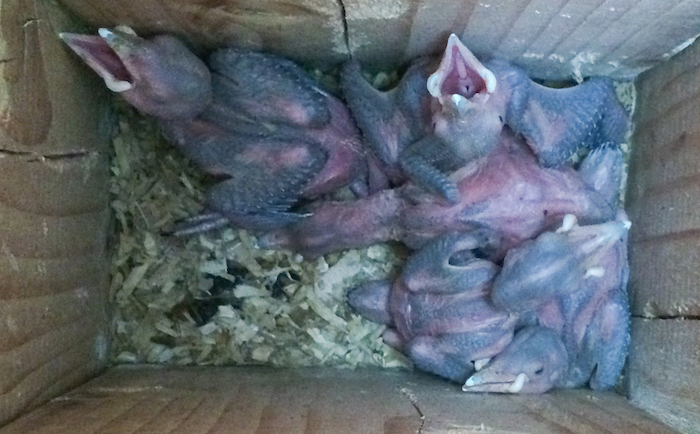
Northern Flicker Nestlings
They act as partners: mated pairs share the work and, we can hope, pleasures of nest construction, egg incubation, and child-rearing.
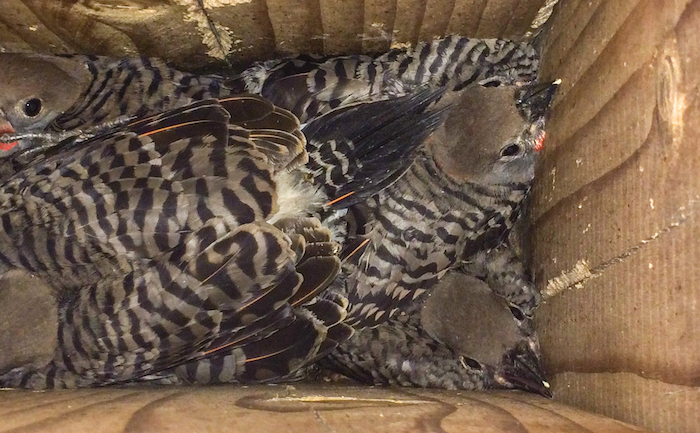
Northern Flicker Nestlings
They get along with their neighbors. Small groups routinely stick together, flocking severally through the woods. Where red- and yellow-shafted flickers meet, they associate impartially.
They communicate with one another, singing a one-pitch staccato trill to call far and wide, or drumming on hollow wood in various cadences, or murmuring to closer birds with a silky weeka-weeka-weeka call.
Of course flickers are not immune to conflict, particularly in finding mates. But they have evolved a ritualized solution to their disputes. As in some other species, rivals face each other, bills to the sky, and they bob and weave together, perhaps calling out, until one seems to decide the other has rights and flies off with no harm done.
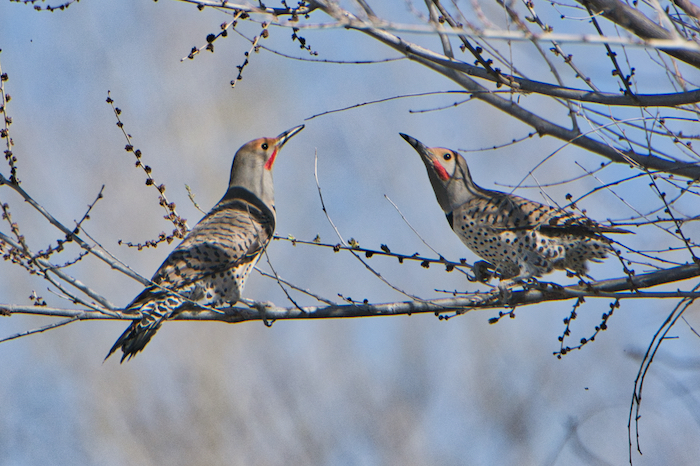
Northern Flicker Males In Conflict
Flickers interact thriftily with other species. Before eating ants, they may rub them over their bodies, or simply allow the ants to crawl over them. It is hypothesized that the ants’ formic acid helps protect the birds from mites and lice, and preening with them may improve the ants’ palatability by reducing their remaining acid content.
They provide for other species, however naively. Many kinds of birds nest in woodpecker cavities, but flickers, because of their large size, are crucial to other large cavity nesters. Buffleheads, the most common black and white duck you’ll see on the river in winter, rely almost exclusively on flickers for nesting cavities.
And flickers live close to the earth. They chisel at bark like other woodpeckers, but most of their foraging is actually done on the ground, where they lap up ants and other insects, as well as fruits and seeds.
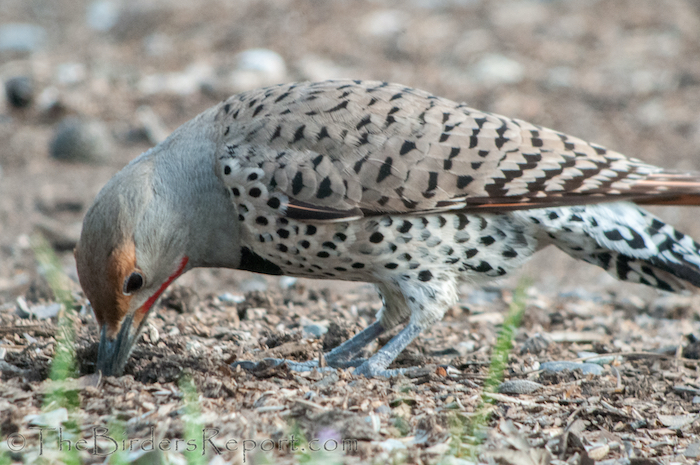
Northern Flicker Male Anting
They are so comfortable with the dirt that even in nesting they will sometimes forgo a tree cavity to raise their young in a hole in the ground–say, an old kingfisher or bank swallow tunnel.
So flickers act as good partners, neighbors, and members of their larger communities and environments–making them quite patriotic, I think, even if they have no notions of that idea. The added power of voting is just our own.

